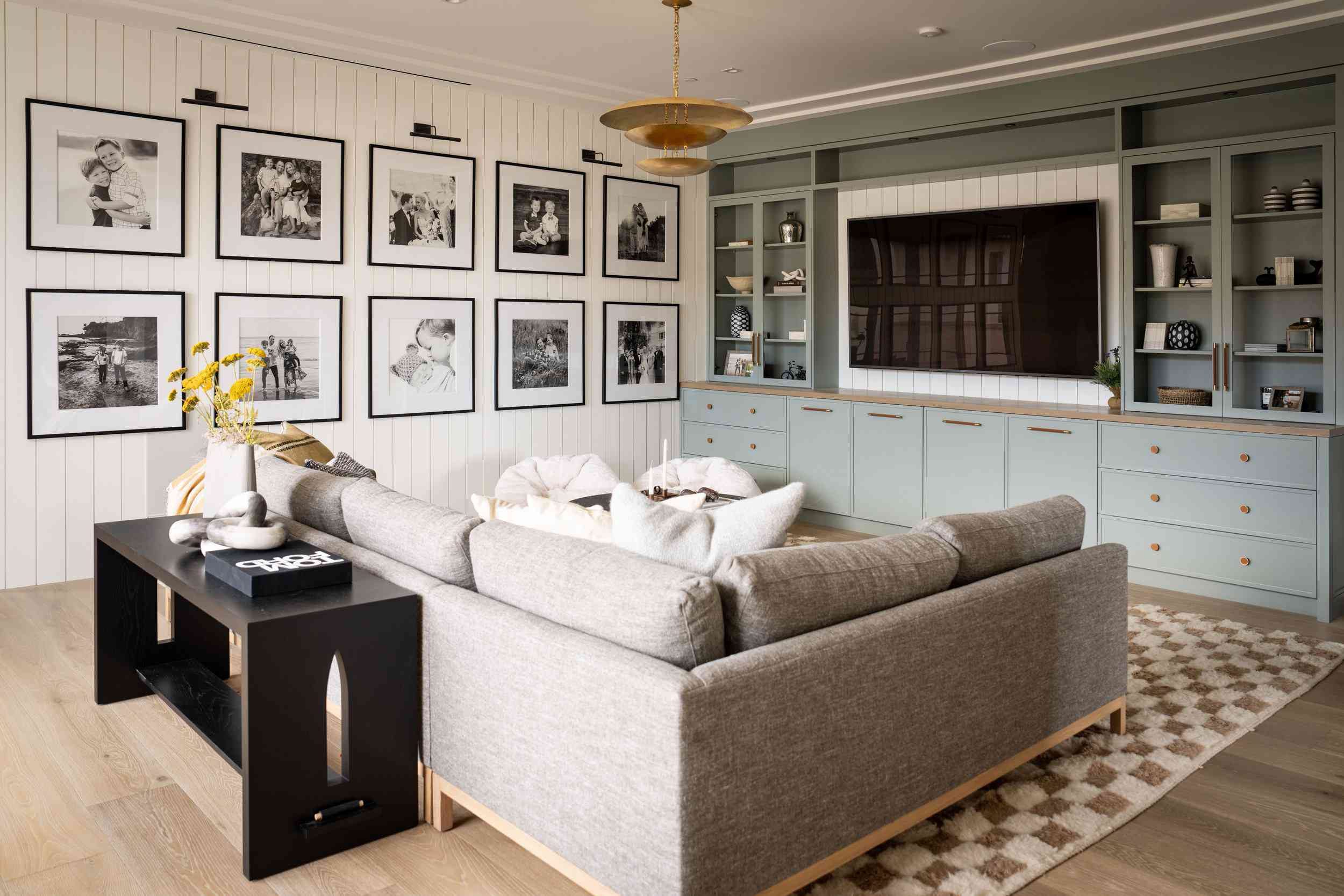Picture walls have transcended mere decoration to become a quintessential element of contemporary interior design. These visually arresting displays serve as a sophisticated medium for personal expression, transforming mundane walls into captivating galleries that narrate our stories.
The art of curating a picture wall, while ostensibly straightforward, requires a nuanced understanding of spatial dynamics and aesthetic principles to achieve that coveted equilibrium between chaos and harmony.
In today’s design landscape, picture walls have evolved beyond the conventional family photo arrangements. They now encompass an eclectic mix of artwork, photographs, memorabilia, and even three-dimensional elements, creating immersive visual experiences that can dramatically alter the ambiance of any space.
Picture Wall Ideas
Whether you’re an aspiring interior decorator or simply looking to revitalize your living space, these fourteen innovative picture wall ideas will guide you through creating a personalized masterpiece that reflects your unique style and personality.
1. The Classic Gallery Wall
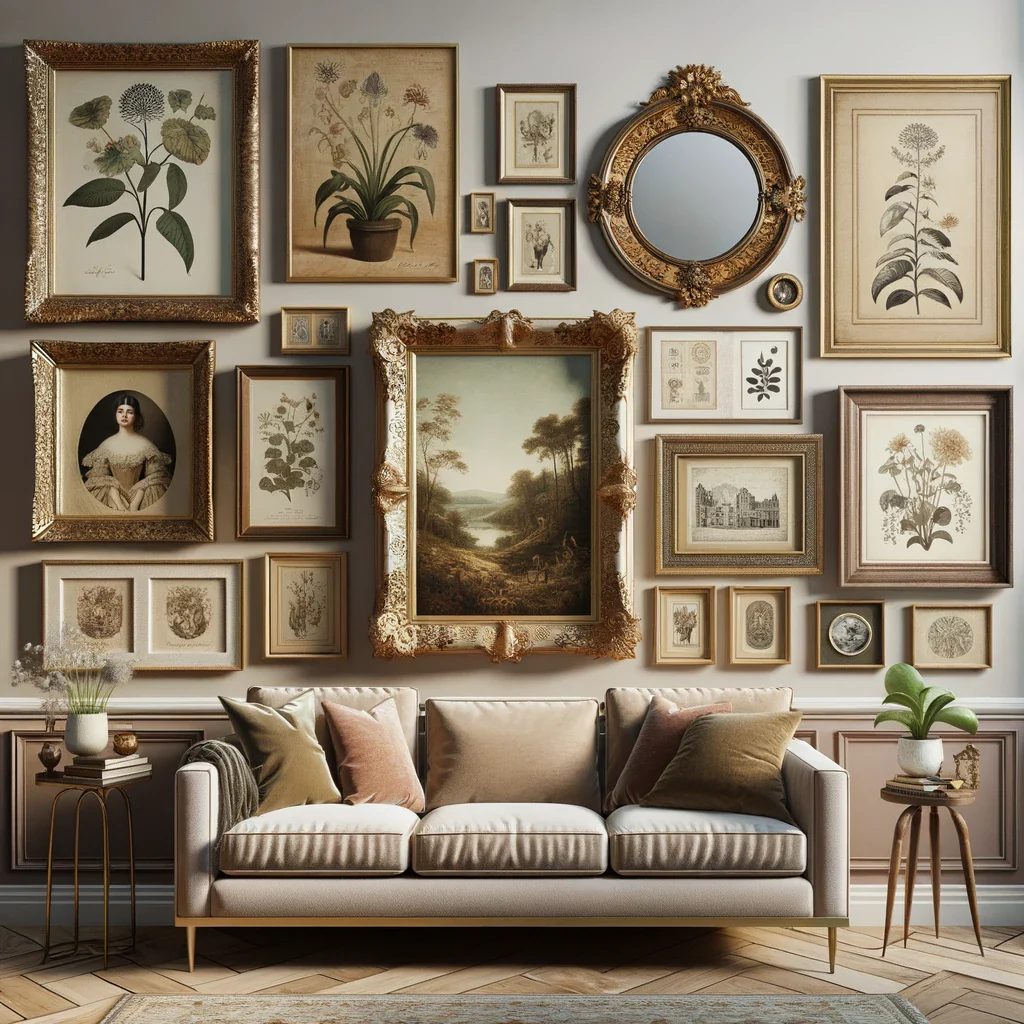
The timeless appeal of a classic gallery wall lies in its structured elegance and methodical arrangement. This style typically features identically sized frames arranged in precise rows and columns, creating a sense of order and sophistication that complements both traditional and modern interiors.
The key to mastering this look is maintaining consistent spacing between frames and selecting harmonious frame finishes. While black and white photos in matching frames create a cohesive look, you can also experiment with sepia tones or vintage photographs to add depth and character. Consider incorporating a mix of family portraits, landscape photography, and artistic prints while maintaining the uniform structure.
2. Organic Cluster Layout
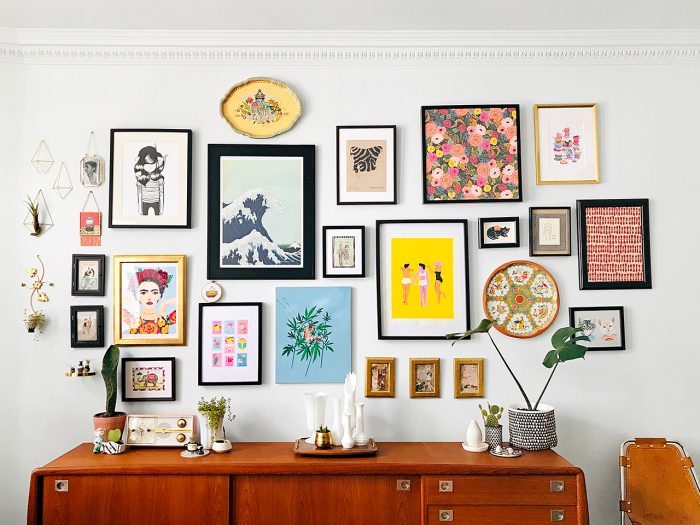
The organic cluster layout embraces spontaneity and natural flow, breaking free from rigid geometric constraints. This arrangement starts from a central point and grows outward like branches on a tree, creating a dynamic and evolving composition that can easily accommodate new additions.
The beauty of this style lies in its flexibility and casual elegance. Mix different frame sizes, styles, and even colors to create visual interest. The key is to maintain enough white space between pieces to prevent the arrangement from feeling cluttered while ensuring that the overall shape remains balanced and pleasing to the eye.
3. Minimalist Grid Pattern
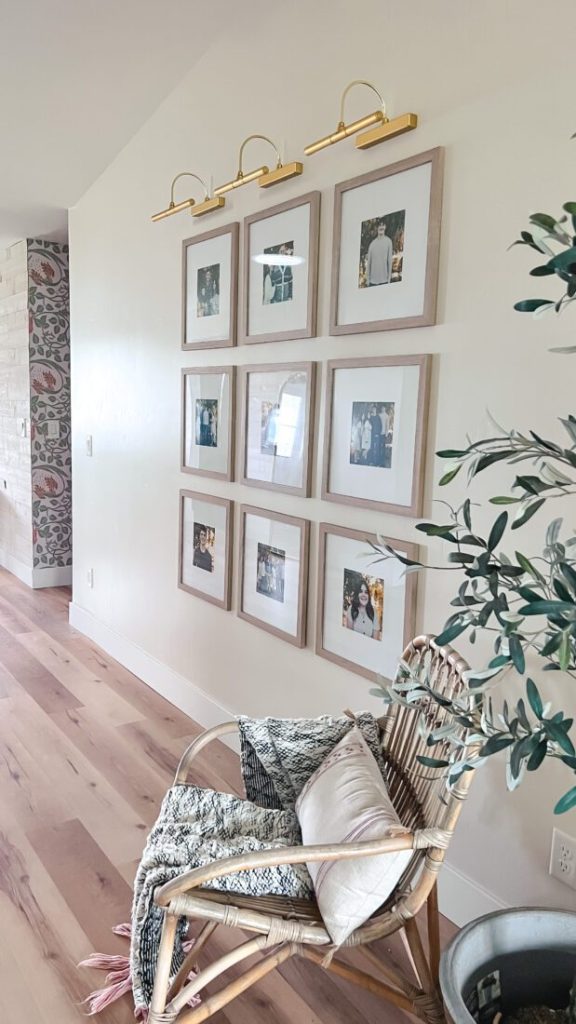
The minimalist grid pattern celebrates simplicity and precision through careful organization and clean lines. This approach typically features identical frames arranged in a perfect grid, creating a strong visual impact through repetition and symmetry.
To execute this style effectively, choose simple, slim frames in a neutral color and maintain absolutely equal spacing between all pieces. The content within the frames should be cohesive – whether it’s black and white photography, abstract art, or botanical prints – to maintain the minimalist aesthetic while creating a powerful collective statement.
Related Guide: 15 Creative Accent Wall Ideas to Transform Your Space
4. Eclectic Mix-and-Match
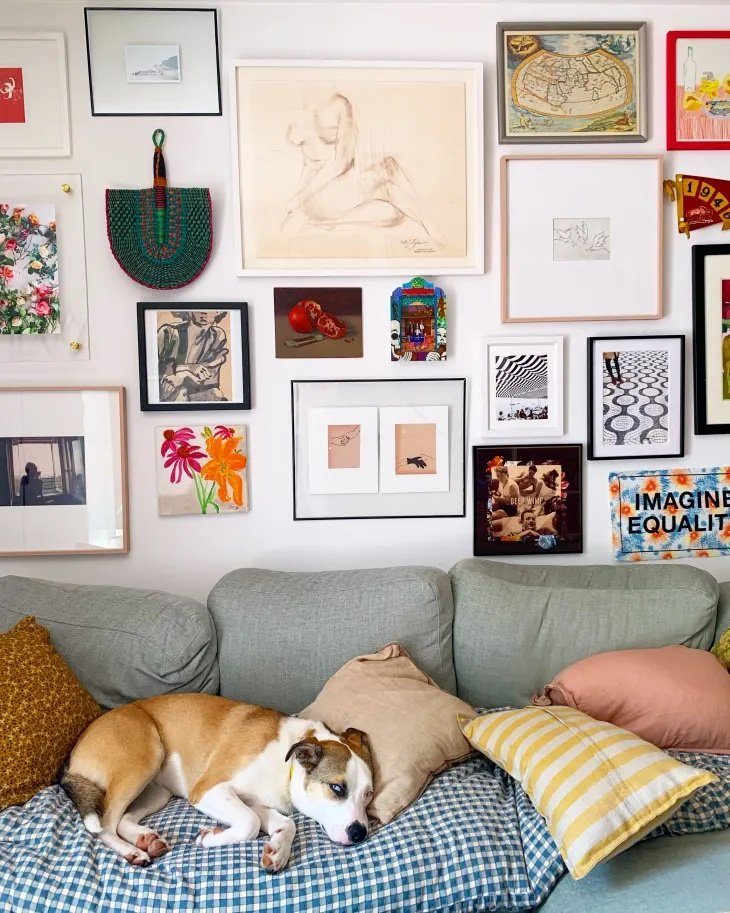
The eclectic mix-and-match approach celebrates diversity in both content and presentation. This style combines various frame styles, sizes, and artwork types to create a vibrant, personality-filled display that tells multiple stories simultaneously.
The success of this layout depends on finding the right balance between variety and cohesion. While frames and artwork can differ significantly, maintaining a common element – such as a color theme or subject matter – helps tie the arrangement together. Consider mixing vintage frames with modern ones, or combining different mediums like paintings, photographs, and prints.
5. Salon-Style Arrangement
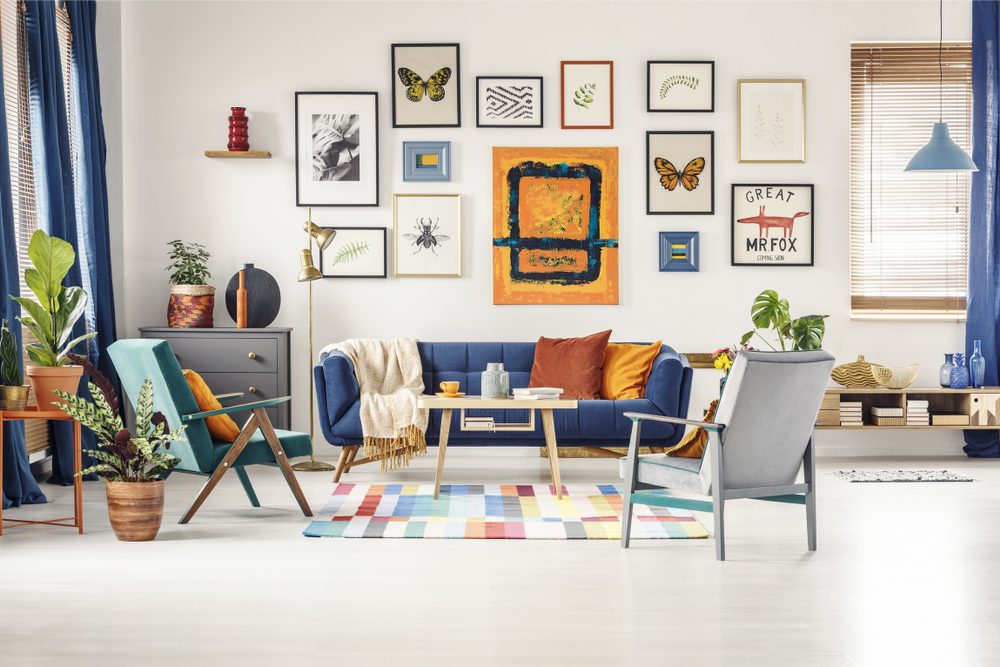
The salon-style arrangement draws inspiration from traditional art galleries, featuring a floor-to-ceiling display of artwork in various sizes and styles. This dramatic approach makes a bold statement and maximizes wall space efficiently.
Creating a successful salon wall requires careful planning and arrangement. Start with larger pieces as anchor points and fill in with smaller works. The key is to maintain visual flow while avoiding obvious patterns. This style works particularly well in rooms with high ceilings and can make smaller spaces feel more intimate and personal.
6. Monochromatic Color Story
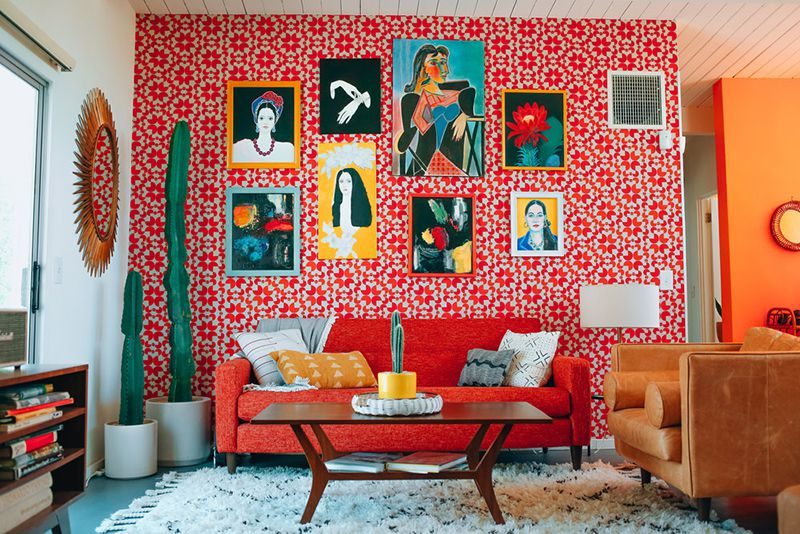
A monochromatic color story creates impact through subtle variations within a single color palette. This sophisticated approach uses different shades, tints, and tones of one color to create depth and visual interest while maintaining a cohesive look.
The success of this style lies in the careful selection of both frames and artwork that complement each other within the chosen color scheme. Consider incorporating different textures and materials to add dimension while staying within your chosen color family. This approach works particularly well in modern and minimalist interiors.
7. Floating Shelf Display
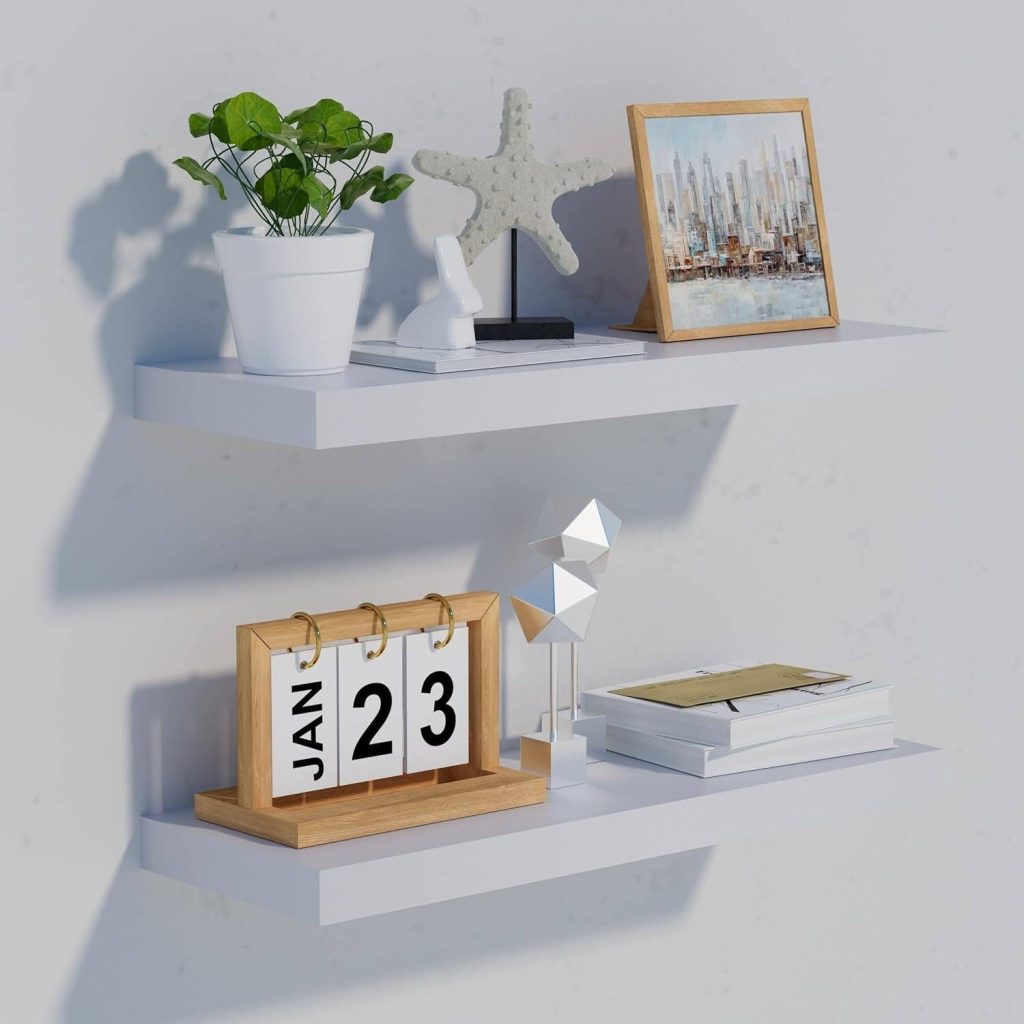
The floating shelf display offers a flexible and easily changeable approach to picture wall design. This method combines the stability of fixed shelving with the ability to lean and layer frames of different sizes without making multiple wall holes.
Implementing this style requires careful consideration of shelf spacing and arrangement. The key is to vary the height of items on each shelf and create depth by overlapping frames slightly. This approach allows for easy updates and seasonal changes while maintaining a polished, curated look.
8. Geometric Pattern Layout
The geometric pattern layout creates visual interest through deliberately planned shapes and patterns. This modern approach uses frames of various sizes arranged to form larger geometric shapes or repeating patterns across the wall.
Success with this style requires precise measurement and planning. Consider using paper templates to perfect your arrangement before hanging. The impact comes from the overall pattern created by the frames, so maintain consistency in frame style and color to let the geometric arrangement take center stage.
9. Statement Center Piece
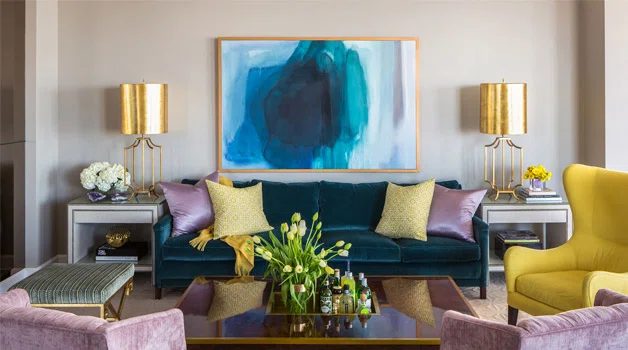
The statement center piece approach anchors your wall display around one dominant artwork or photograph. This focal point becomes the heart of your arrangement, with smaller pieces arranged to complement and enhance its impact.
Creating this layout requires careful consideration of scale and balance. The central piece should be substantial enough to command attention but not so large that it overwhelms the supporting elements. Surrounding pieces should complement rather than compete with the main artwork.
10. Floor-to-Ceiling Runner
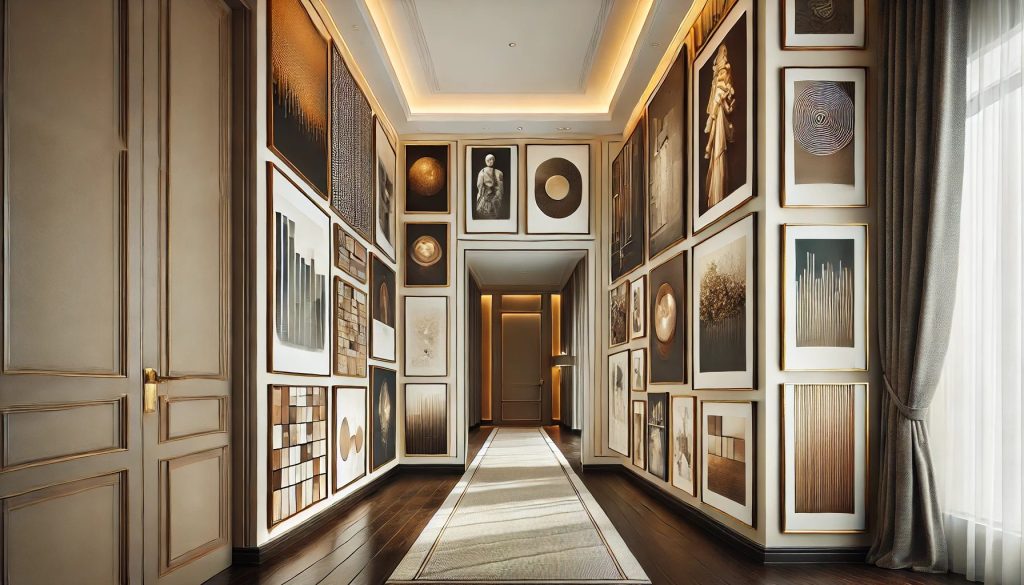
The floor-to-ceiling runner creates a dramatic vertical display that draws the eye upward and makes excellent use of narrow wall spaces. This arrangement works particularly well in hallways, staircases, or any area where horizontal space is limited.
Implementation requires careful attention to vertical spacing and alignment. Consider using a single column of similarly sized frames, or create multiple parallel runners for a more complex display. This style can make ceilings appear higher and add visual interest to otherwise underutilized spaces.
11. Themed Collection Display
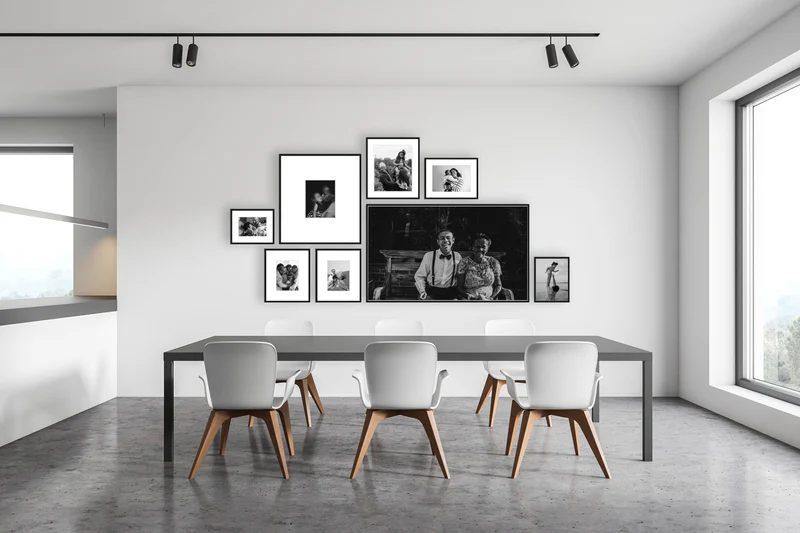
The themed collection display unifies your picture wall through consistent subject matter or style. This approach creates a cohesive narrative while allowing for variation in frame sizes and arrangements.
Success with this style depends on careful curation of your chosen theme. Whether it’s travel photography, botanical prints, or family portraits, maintain consistency in style while varying composition and scale to keep the display interesting and engaging.
Related Guide: 16 Sensational Small Wall Decor Ideas
12. Corner Wrap Display
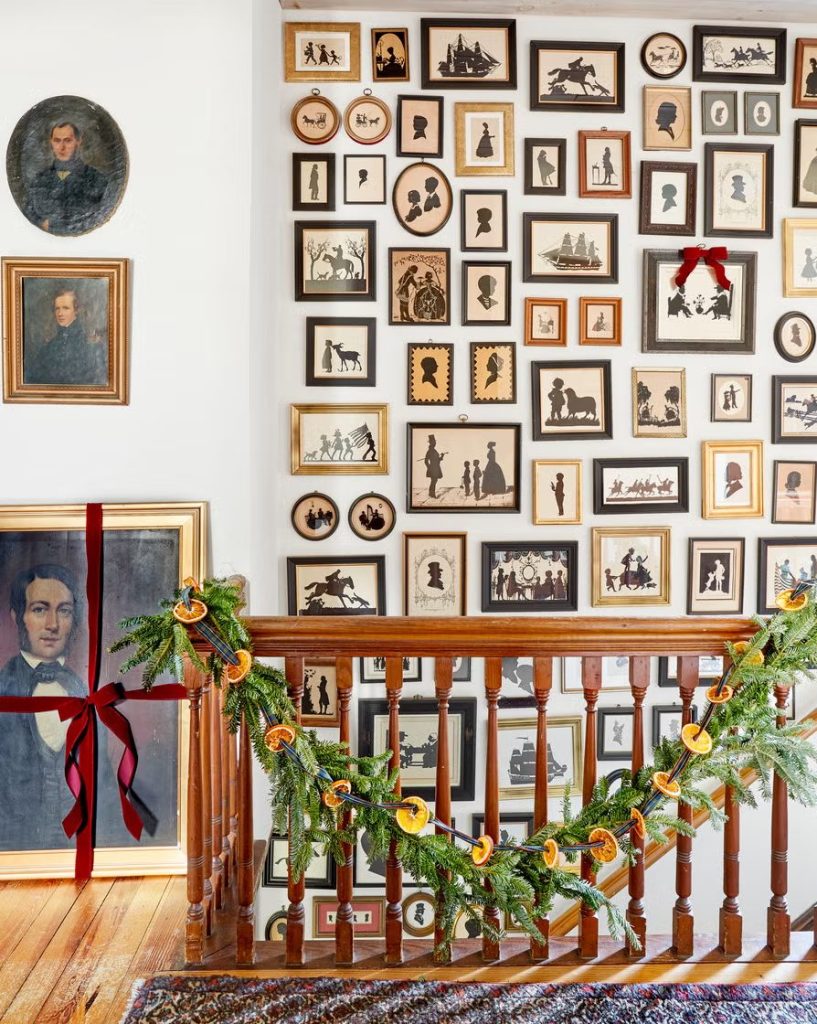
The corner wrap display creates continuity across adjacent walls, turning a potentially awkward corner into a design feature. This innovative approach helps unite spaces and creates a flowing visual narrative that guides the eye around the room.
Implementation requires careful planning to ensure the display flows naturally around the corner. Consider using smaller frames near the corner itself, gradually increasing in size as you move outward. This creates a natural transition and maintains visual balance across both walls.
13. Asymmetrical Balance
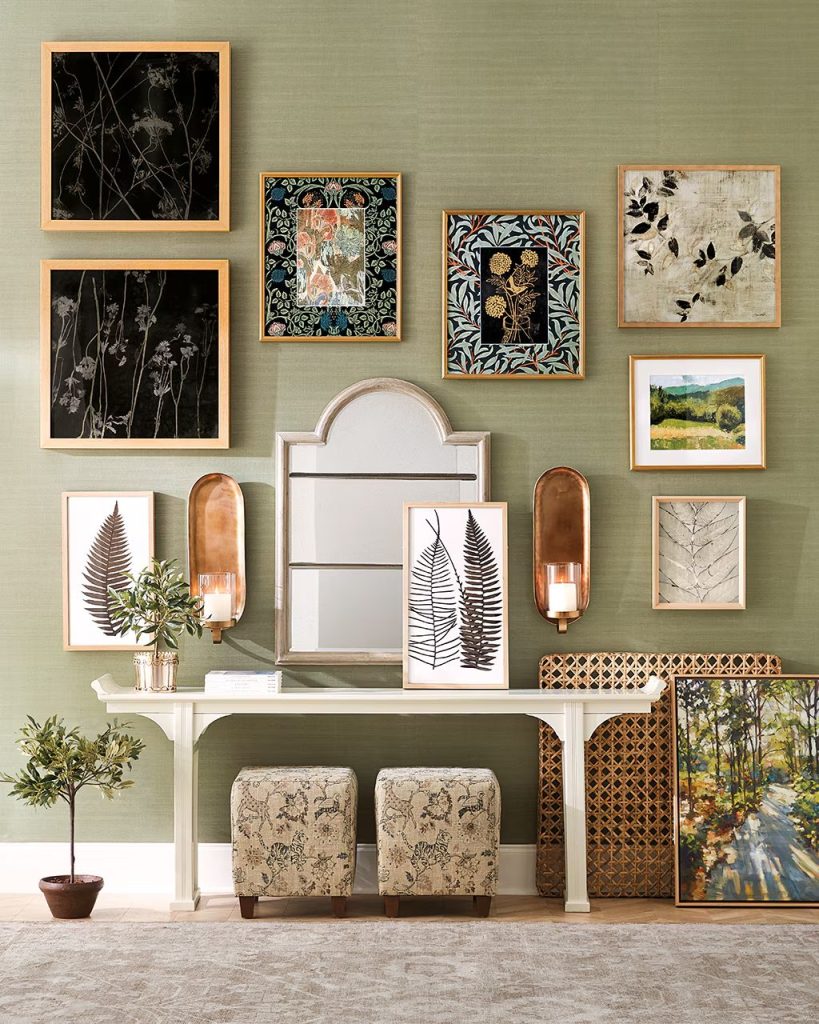
The asymmetrical balance approach creates visual interest through deliberately uneven arrangements that still maintain overall equilibrium. This style plays with weight and visual mass rather than strict symmetry to create an engaging display.
Success with this style requires an understanding of visual weight and careful arrangement of elements. Larger pieces should be balanced by clusters of smaller frames, creating a dynamic but stable composition that draws the eye across the entire display.
14. Mixed Media Installation
The mixed media installation combines traditional framed pieces with three-dimensional elements to create a truly unique and textured display. This approach adds depth and interest through the incorporation of various materials and objects.
Executing this style requires careful consideration of both visual and physical weight. Consider incorporating elements like mirrors, wall sculptures, textile art, or mounted objects alongside traditional frames. The key is to create a cohesive composition while celebrating the diversity of materials and forms.
Conclusion
Creating the perfect picture wall is an art form that combines personal expression with design principles to transform any space into a unique and meaningful display. These fourteen ideas serve as a foundation for your own creative journey, offering versatile approaches that can be adapted to suit any style or space.
Remember that the most successful picture walls evolve over time, allowing you to add, subtract, and rearrange elements as your taste and collection grow.
Whether you choose the structured elegance of a classic gallery wall or the dynamic energy of a mixed media installation, the key is to create a display that resonates with your personal style while enhancing your living space.
Let these ideas inspire you to create a picture wall that not only showcases your cherished memories and artwork but also serves as a testament to your unique aesthetic vision.

